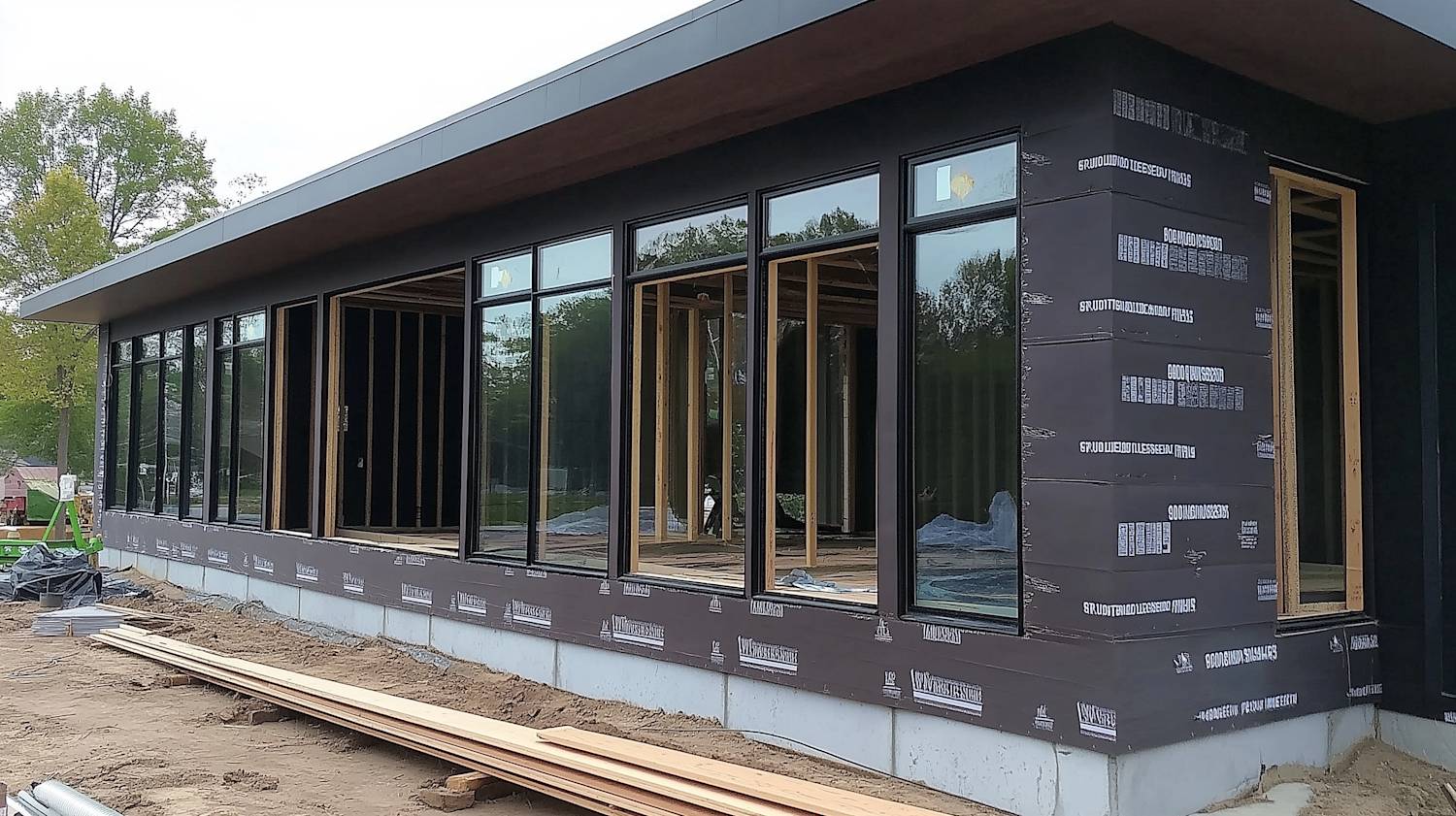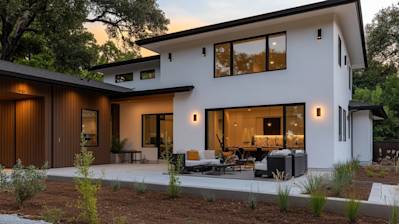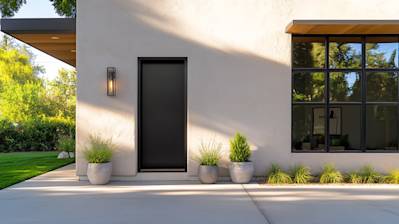In the sphere of construction and architecture, introducing a waterproofing membrane is crucial for the longevity of your property. As an invisible yet robust layer of protection, it safeguards buildings against water damage. This in-depth article explores the world of waterproofing membranes, shedding light on its importance, types, and applications.
What is a Waterproofing Membrane?
A waterproofing membrane is a thin layer of water-tight material laid over surfaces to prevent water from infiltrating substrates. It acts as a barrier between a building structure and water to ward off potential damage caused by moisture and leakage. Typically used in the construction of wet areas like bathrooms, kitchens, balconies, and rooftops, it ensures your real estate asset retains its value over time.
Essentials of Waterproofing Membrane
The ever-growing importance of waterproofing membranes in the construction industry can’t be overstated. Here are some key points that emphasize its significance:
- Protection Against Water Damage: The primary role of a waterproofing membrane is to prevent water intrusion, thereby protecting the underlying structure from potential damage like mould, rot, and deterioration.
- Structural Integrity: By preventing water ingress, these membranes contribute towards maintaining the building's structural integrity.
- Longevity: A waterproofing membrane extends the life of construction structures, ensuring they stand strong over years of exposure to different weather elements.
- Indoor Comfort: By keeping moisture at bay, waterproofing membranes help to sustain a comfortable indoor environment.
Dive into the Types of Waterproofing Membrane
Waterproofing membranes come in a variety of forms, mainly differentiated by their material composition and application method. Let's delve into the three most common types:
Liquid Applied Membranes
Liquid applied membranes are highly elastic and flexible waterproofing systems, applied onto surfaces in liquid form and eventually hardening to create a rubber-like protective layer. These membranes have a great ability to bond firmly to almost any surface type, making them a popular choice for waterproofing roofs and balconies.
Sheet-based Membranes
Sheet-based waterproofing membranes are pre-formed and installed onto surfaces using an adhesive. They are usually made of rubber, plastic, or bituminous material, and are known for their high resistance to puncture and tear. Sheet membranes are ideal for use in underground structures and flat roofs.
Cementitious Waterproofing Membrane
The cementitious waterproofing membrane is manufactured from a blend of cement, sand, and special additives. Known for their easy application and cost-effectiveness, they are widely used in internal areas such as bathrooms, kitchens, and basements.
An Insight into Waterproofing Membrane Installation Procedures
The process of installing a waterproofing membrane varies depending on the type of membrane and the surface it will be applied to. Following is a general step-by-step guide:
- Start with a clean surface - It’s important to clean the area where the waterproofing membrane will be installed. Any dust or debris can hamper the membrane's adhesion, reducing its effectiveness.
- Application of the primer - After cleaning, a primer is applied to the surface. This helps in creating a perfect bonding surface for the membrane.
- Once the primer has dried, the waterproofing membrane is applied over the surface. In the case of sheet-based membranes, adhesive is used to stick the membrane to the surface. The liquid membrane is spread using a brush, roller, or spray.
- Once the membrane is applied, it needs to be left to dry for a stipulated time. Always refer to the manufacturer's instructions for specific drying times.
Remember, proper installation is crucial to ensure the maximum effectiveness of the waterproofing membrane. Therefore, it's always advisable to have the installation carried out by certified professionals.
Frequently Asked Questions about Waterproofing Membrane
How does a waterproofing membrane work?
Waterproofing membranes work by creating an impermeable layer designed to prevent water from penetrating surfaces. They are typically applied to the surfaces of foundations, walls, roofs, or bathrooms to prevent the leakage and seepage of water, protecting these structures from water damage over time.
What are the applications of a waterproofing membrane?
Waterproofing membranes are commonly used in both commercial and residential construction for protecting various types of structures from water damage. They are often applied to foundations, basements, bathrooms, decks, and rooftops. Commercially, they are used in water treatment plants, tunnels, bridges, and more.
How is a waterproofing membrane installed?
The installation process of a waterproofing membrane varies depending on the type of membrane being used and the surface it's being applied to. However, the process usually involves cleaning the surface, applying a primer, then the membrane, and finally, a protective layer. This process ensures the membrane properly adheres to the surface and remains durable for a long period of time.
Can I apply a waterproofing membrane by myself?
While it's possible to apply a waterproofing membrane yourself, it's often a complex task that requires specialist knowledge and tools. If not applied correctly, it may not offer the protection you need, which could lead to costly repairs in the future. It's generally recommended to hire a professional to ensure the job is done correctly.
How long does a waterproofing membrane last?
The durability and lifespan of a waterproofing membrane depend on various factors, such as the type of membrane used, the quality of installation, and the environmental conditions it's exposed to. However, most high-quality waterproofing membranes can last between 10 to 25 years or even more under ideal conditions.
What's the difference between a waterproofing and damp-proofing membrane?
While both waterproofing and damp-proofing membranes protect structures from moisture, they do so in different ways and to different extents. A damp-proofing membrane primarily protects against moisture due to dampness or humidity while a waterproofing membrane provides a higher level of protection that can prevent water ingress due to pressure.
Can waterproofing membranes be used for roofs?
Absolutely, waterproofing membranes are commonly used for roofs as they provide protection against rainwater. The type of waterproofing membrane you should use for a roof depends on the specifics of the project such as the slope of the roof, the type of materials used in the roof, and the local climate.
What can happen if a waterproofing membrane isn't installed correctly?
If a waterproofing membrane isn't installed correctly, it may not provide the desired level of protection against water ingress. This can lead to various problems, such as moisture penetration, water damage, structural deterioration, and growth of mold and mildew. Incorrect application may also decrease the lifespan of the membrane.
Is a waterproofing membrane environmentally friendly?
Many types of waterproofing membranes are designed to be environmentally friendly. However, it varies depending on the specific product. Some are made from recycled materials and are highly durable, reducing the need for replacement and waste. It's best to check with the manufacturer or supplier for specifics about a product's environmental impact.
Pros of Waterproofing Membrane
Longevity
Durability
Waterproofing membranes are extremely durable, often lasting decades. They are typically made of rubber, modified bitumen, PVC, TPO or other sturdy materials that resist degradation over time. This durability increases the lifespan of structures and surfaces they protect, potentially saving money on repairs and replacements in the long run.
Reduces Maintenance Requirements
Waterproofing membranes are resistant not only to water, but also UV exposure, chemicals, and physical damage. This makes them low-maintenance options for a variety of household and industrial applications. You won’t need to worry about regular touch-ups, allowing you to focus your time and resources elsewhere.
Versatility
Wide Range of Applications
Waterproofing membranes can be applied to a variety of surfaces, including roofs, basements, bridges, pools, and even planters. Different types of membranes are suitable for different purposes, giving consumers a wide range of possibilities for waterproofing projects.
Variety of Materials Available
Waterproofing membranes are made from a range of materials, including liquid, sheet, cementitious, and bituminous. This variety allows for flexibility in choosing the right membrane for specific applications. For instance, liquid membranes can cover a wider surface area without seams, while sheet membranes are great for detailed or tricky areas.
Efficiency
Effective Water Barrier
The primary function of a waterproofing membrane, keeping water out, is a critical one. Good quality membranes offer exceptional water resistance and effectively prevent moisture damage. For locations that experience heavy rainfall, flooding, or high humidity levels, these membranes are vital to prevent damage to the structure.
Energy Efficiency
Certain types of waterproofing membranes, particularly white or light-colored ones, can help reflect sunlight and thus maintain cooler indoor temperatures. This can lead to energy savings by reducing the need for air conditioning, making these membranes a smart choice for environmentally-conscious consumers and those living in hot climates.
Cons of Waterproofing Membrane
Cost
Initial Investment
The initial cost of purchasing and installing waterproofing membranes can be rather high, especially for good quality ones. While this investment could lead to savings down the line through reduced maintenance and increased lifespan of the structure, the upfront financial commitment might deter some consumers.
Professional Installation Costs
Many waterproofing membranes require professional installation to ensure they are applied correctly and will efficiently prevent moisture damage. This can increase the overall cost of the project considerably. Even those membranes that can be installed by the homeowners themselves often require the purchase of specialized tools or materials, adding to the expense.
Complexity
Installation Process
The process of applying waterproofing membranes can be complex and time-consuming. Whether you hire professionals or opt for a DIY installation, it requires careful planning and preparation. In addition, some membranes must cure for a certain period of time after application, which could delay the completion of your project.
Requires Proper Drainage
Even with a waterproofing membrane, proper drainage is a critical component of protecting any structure from water damage. If water pools on the membrane, pressure can build up over time and potentially damage the membrane – meaning that additional work might be required to create effective drainage systems.
Limitations
Not Always Fully Waterproof
While waterproofing membranes are designed to eliminate the risk of water damage, they aren’t necessarily 100% waterproof in all scenarios. Under extreme or prolonged exposure to water, some cheaper or poorly installed membranes might eventually let water in.
Environmental Impacts
Some types of waterproofing membranes, specifically petroleum-based ones, may have negative impacts on the environment. In addition, during installation, harmful fumes can be released, potentially causing health issues for those in the vicinity. It’s necessary to understand and mitigate these environmental risks as much as possible.
Summary
Waterproofing membranes are a pretty neat advancement in construction technology. They provide an excellent way to protect your structures from water damage. It's like a coat of armor that fortifies your buildings against the relentless attacks of moisture and water. In the communal fight against corrosion, waterproofing membranes have definitely proven their worth.
As you can see, a waterproofing membrane is one of the most handy tools you can have in your home improvement toolkit. Be it for your basement, shower, or roof - they have got you covered, literally! The best part is the fact they are adaptable to a variety of conditions and structures, ultimately giving you the best bang for your buck.
Pretty cool, right? Waterproofing membrane definitely plays a key role in maintaining the durability of your buildings. It is like a valuable insurance policy for your structure against water-related damages. With the peace of mind it offers, there's no doubt that going for waterproofing membranes is a smart move.
About Atlas Stucco
Atlas Stucco, based right in the heart of Sacramento, CA, is your go-to professional for all things stucco. We've been serving homes and businesses in the area with top-notch stucco applications and repairs for over a decade now. Honesty, reliability, and a serious commitment to craftsmanship are the pillars of our business. Whether you've got a small residential project or a large commercial endeavor, our skilled team is here to make your stucco dreams come true!
Tags: waterproofing, construction, roofing,








